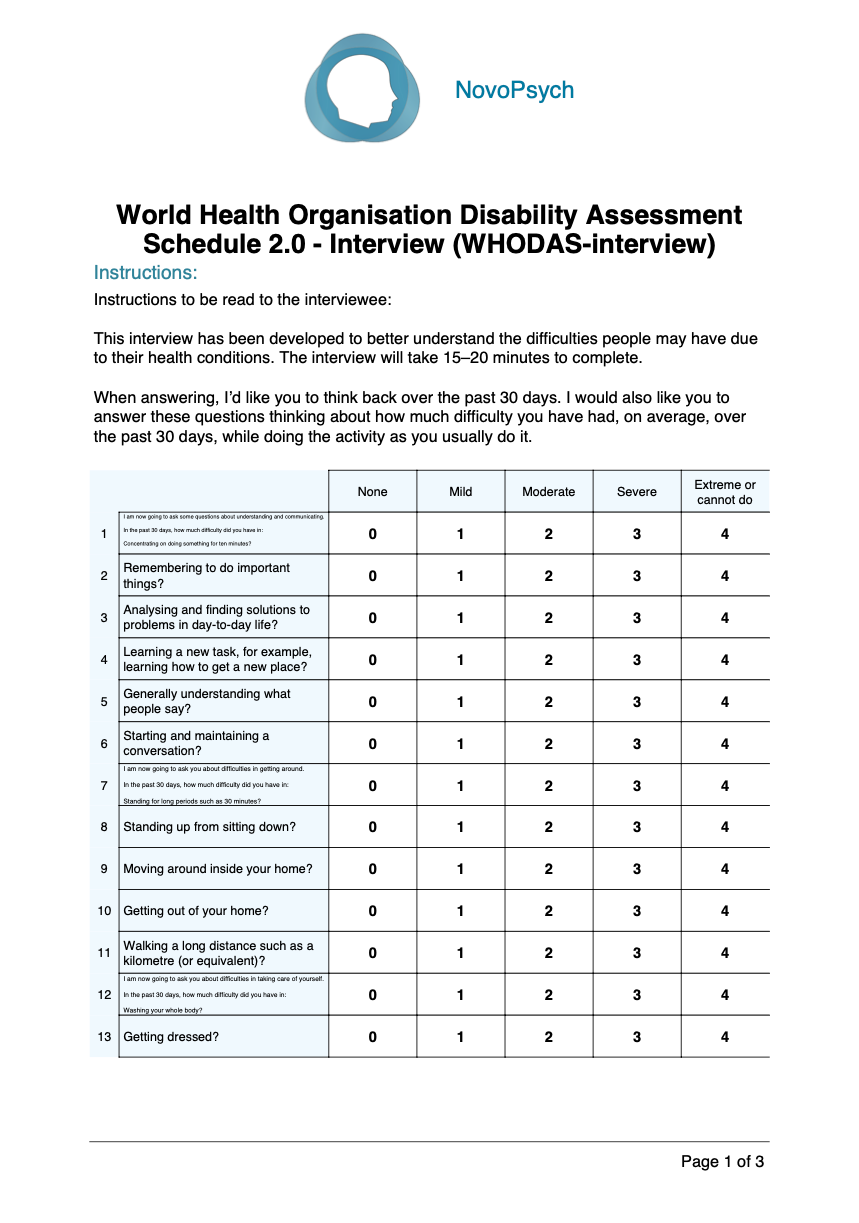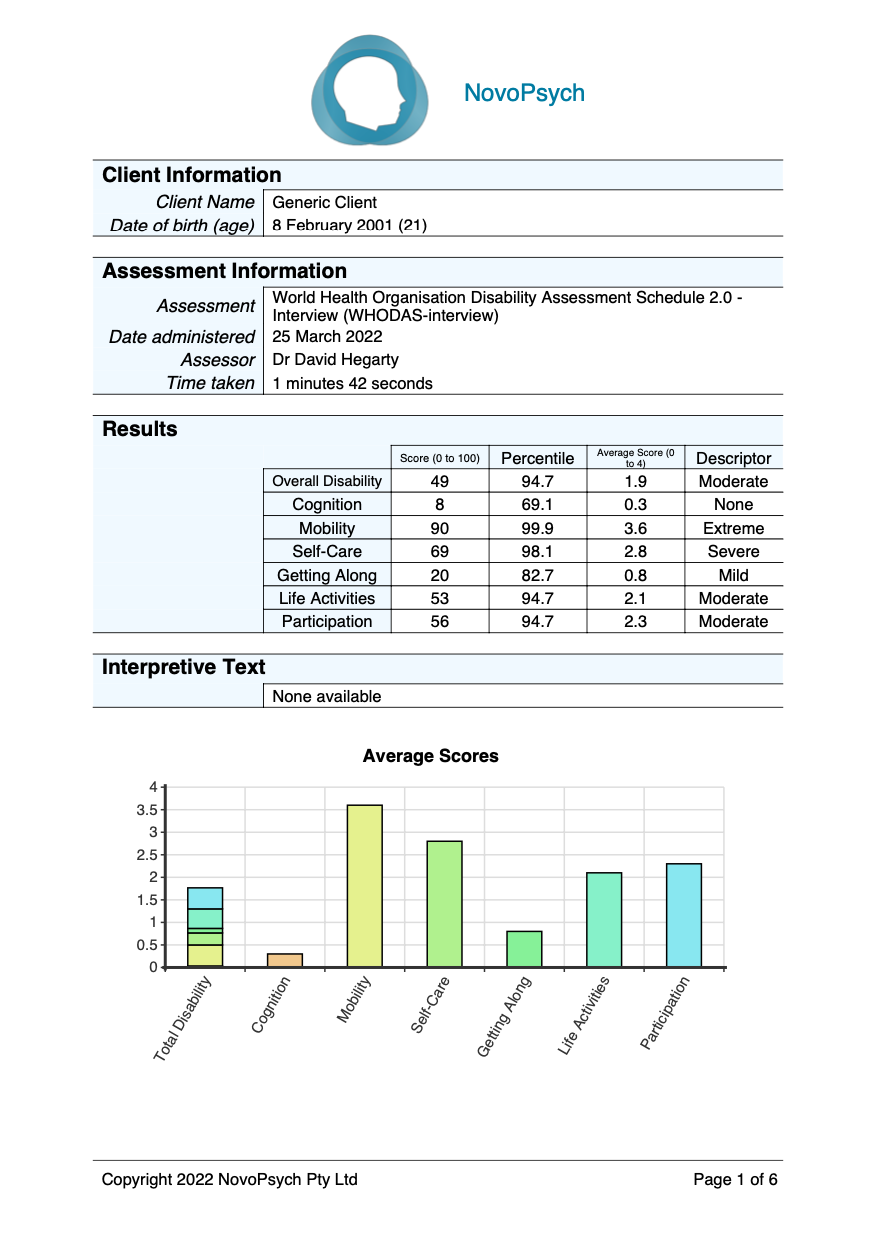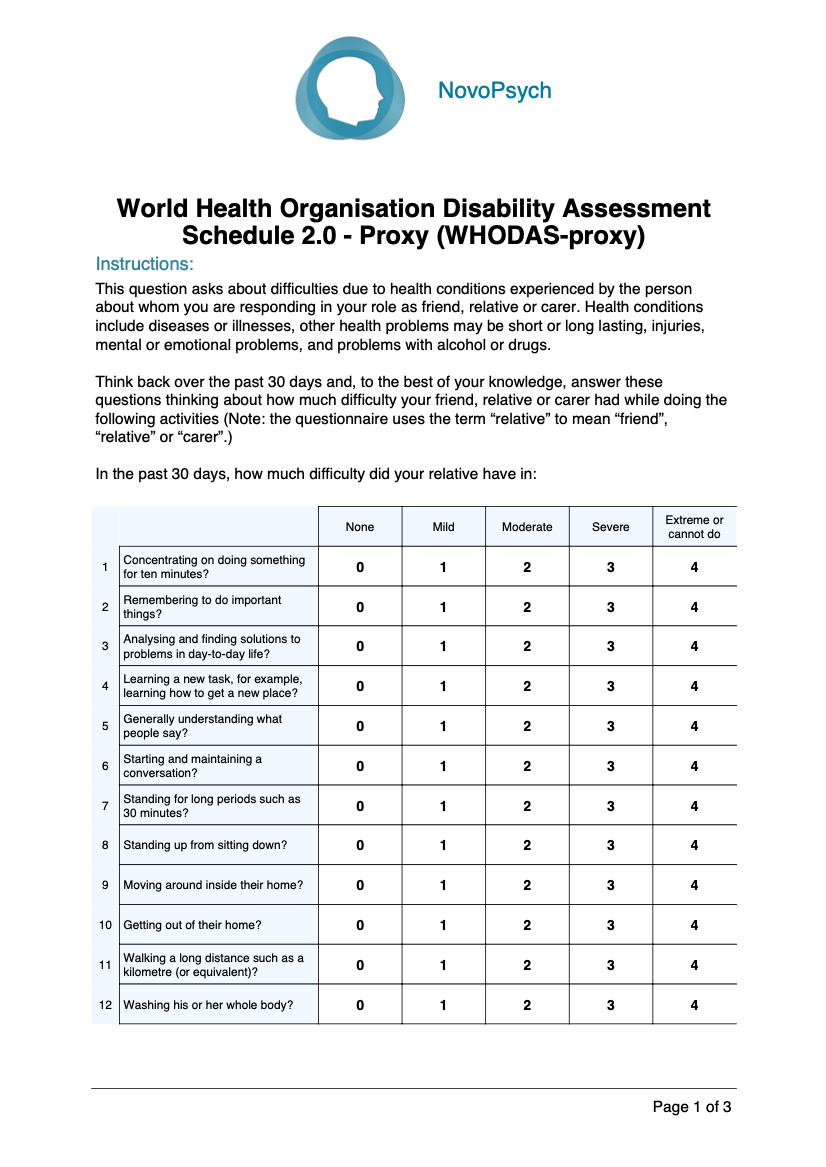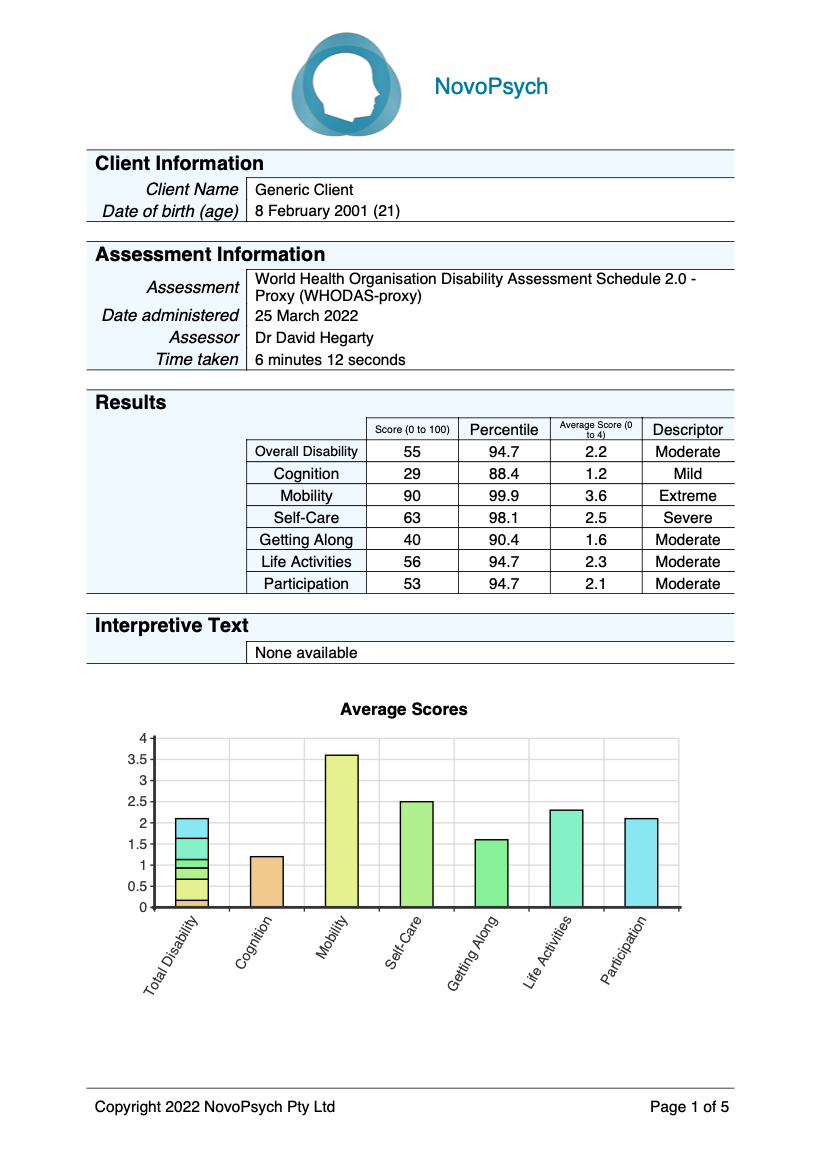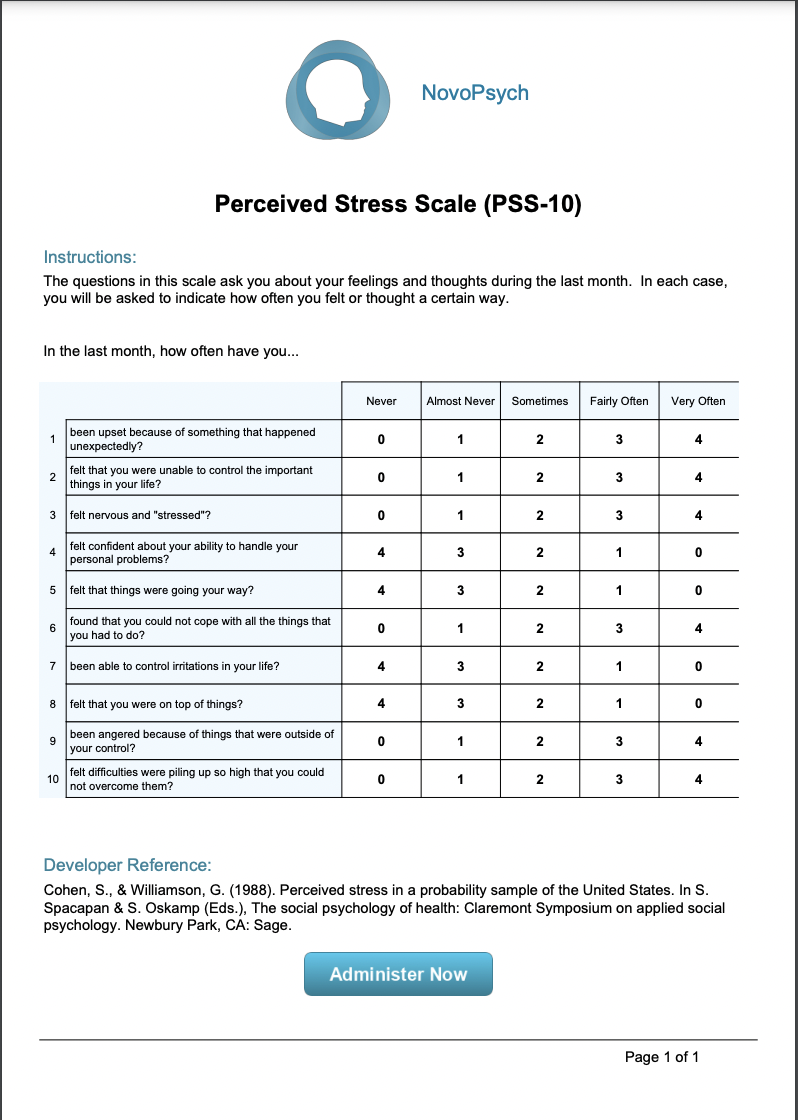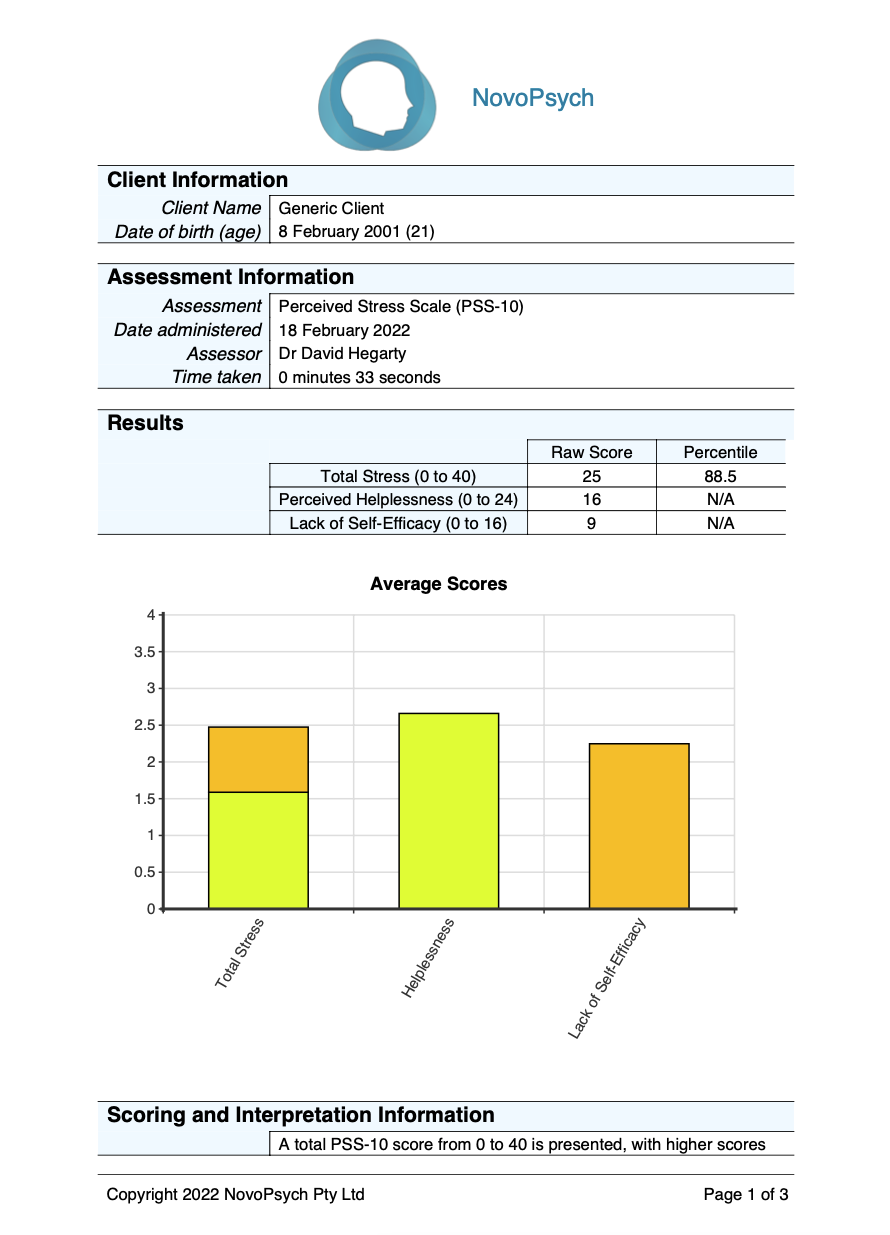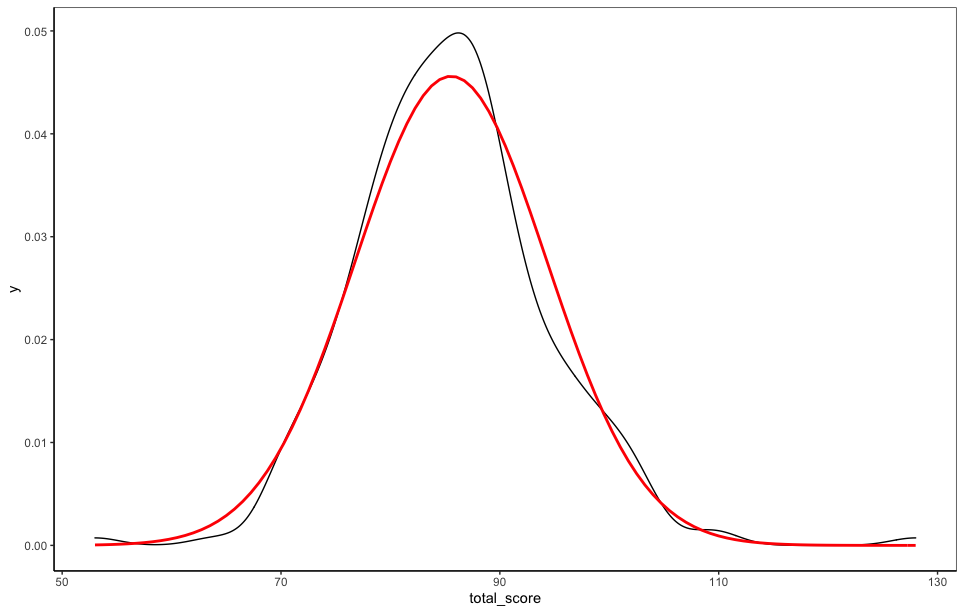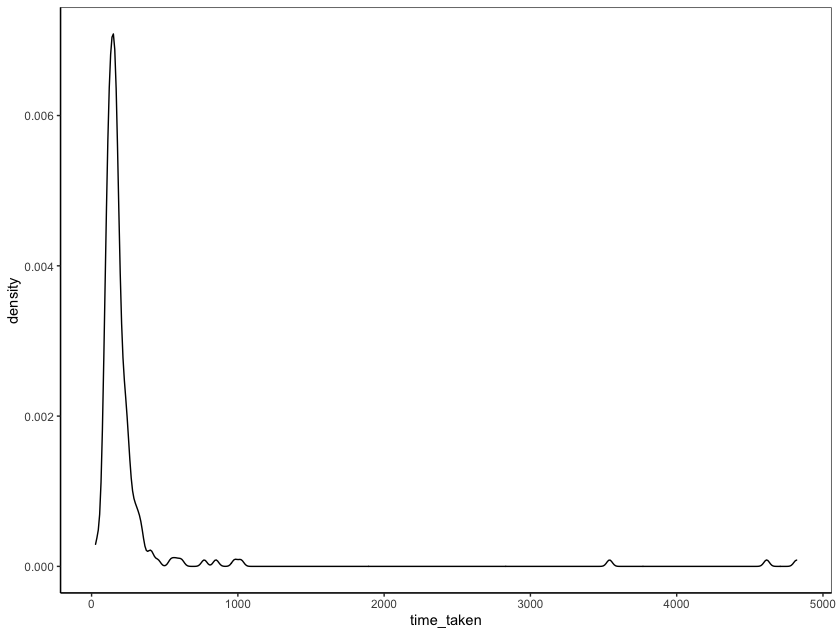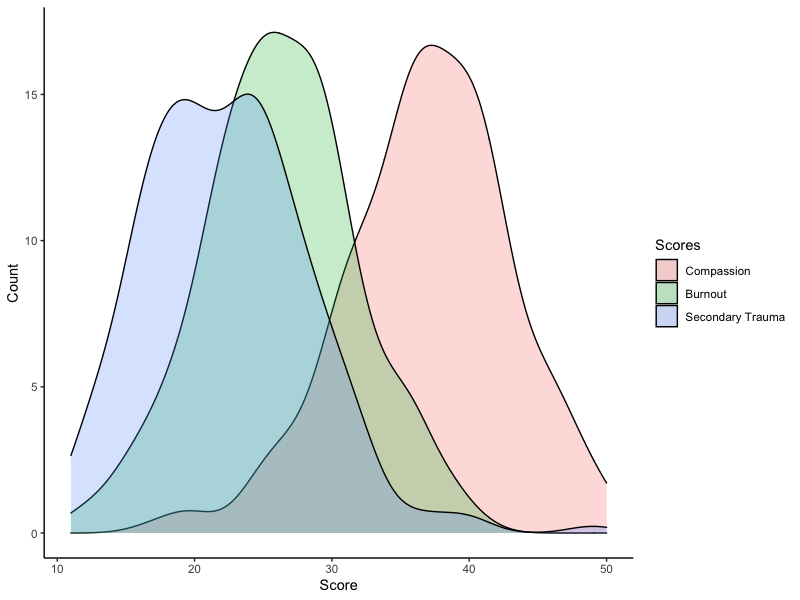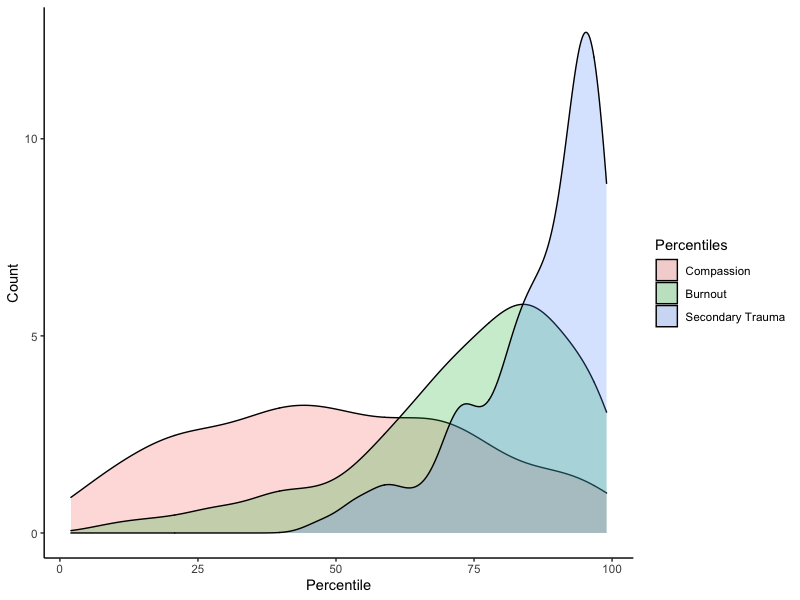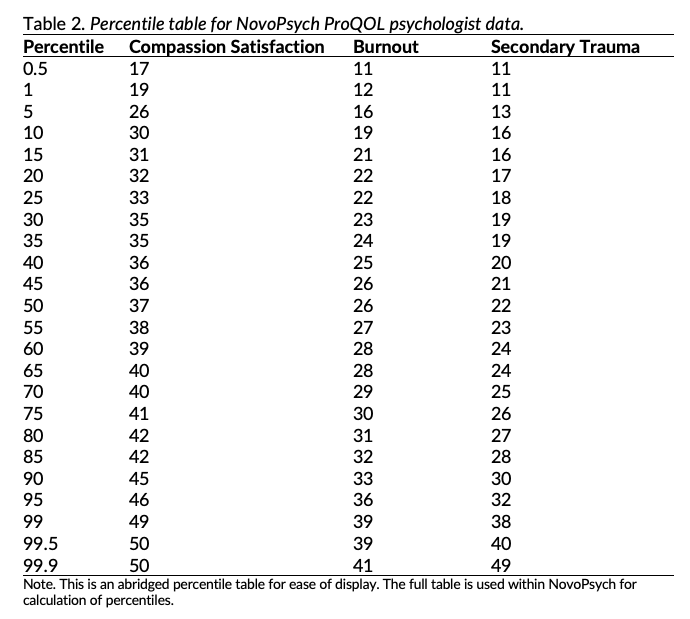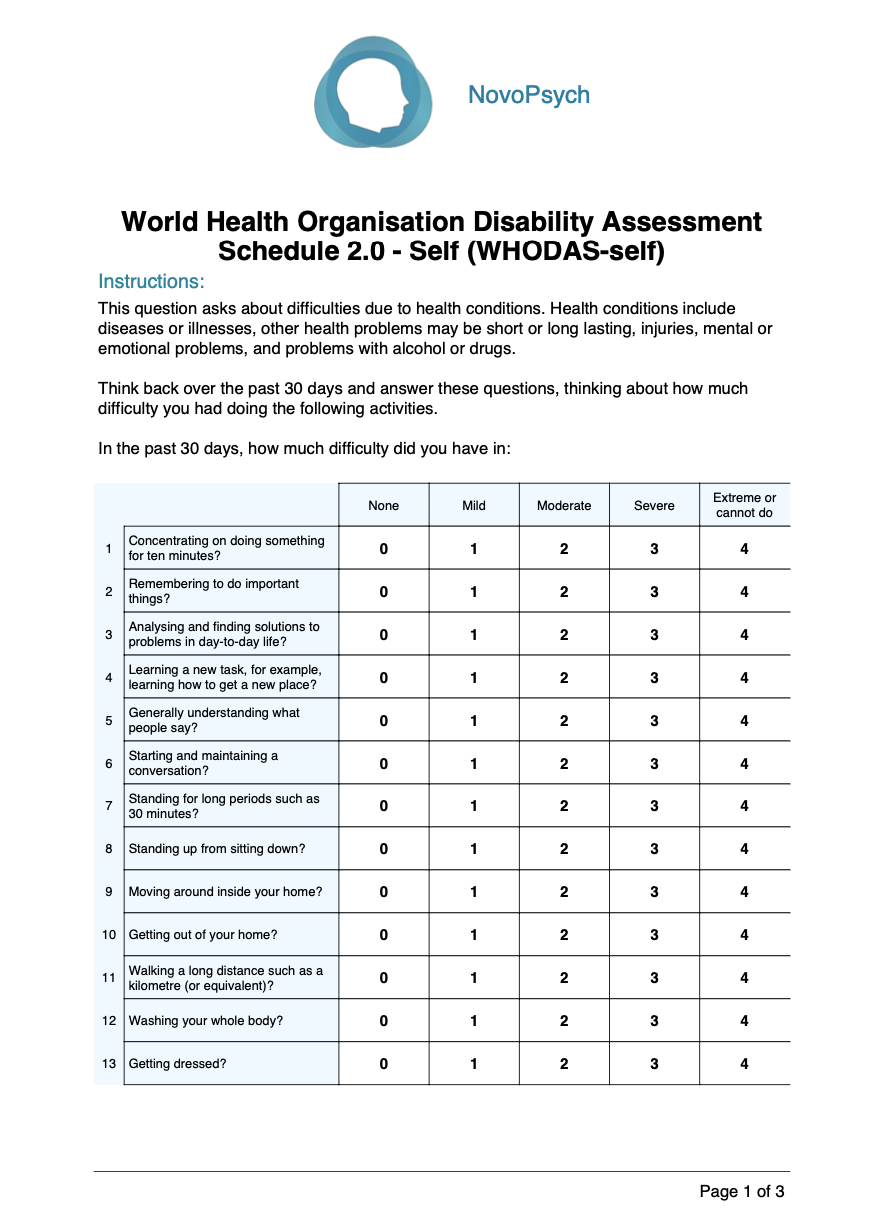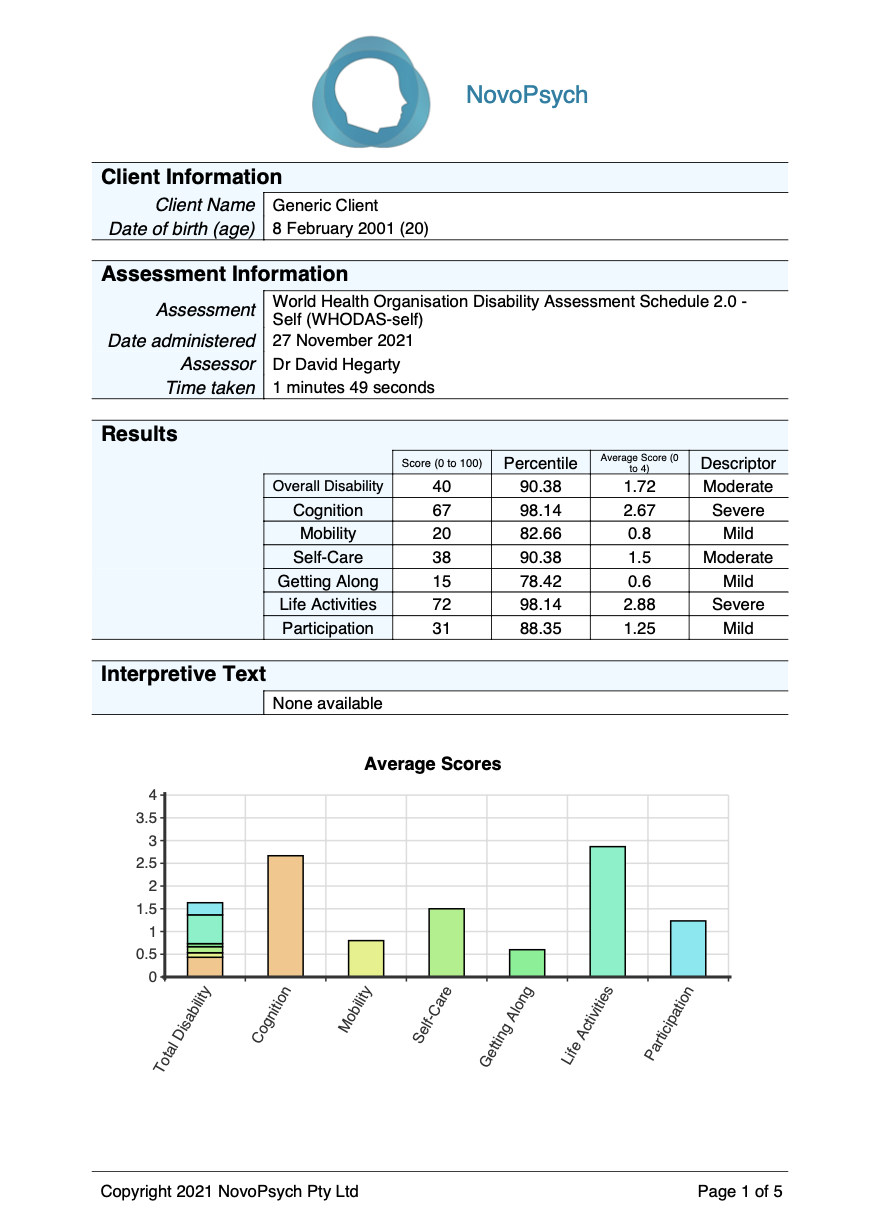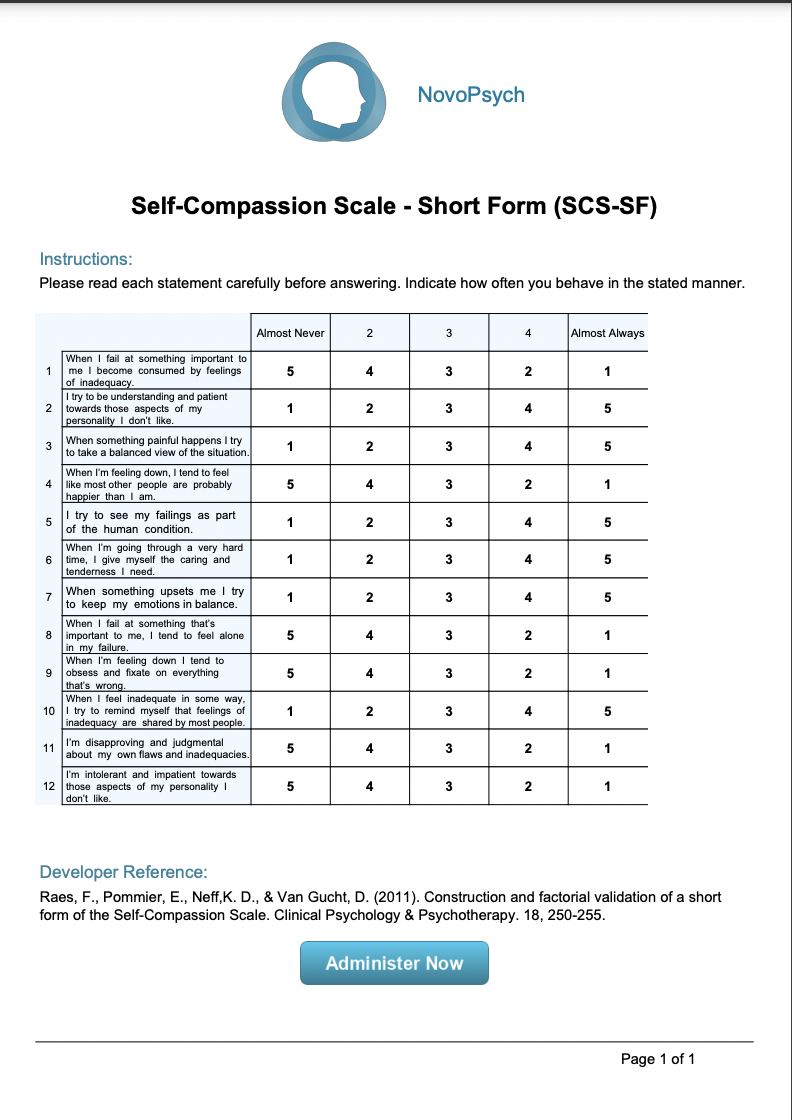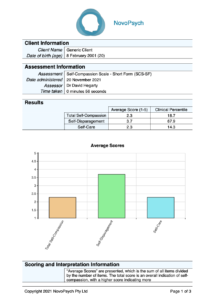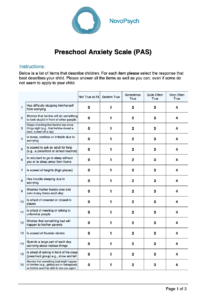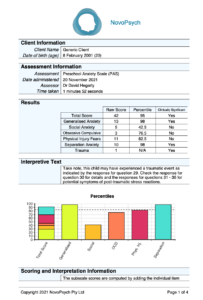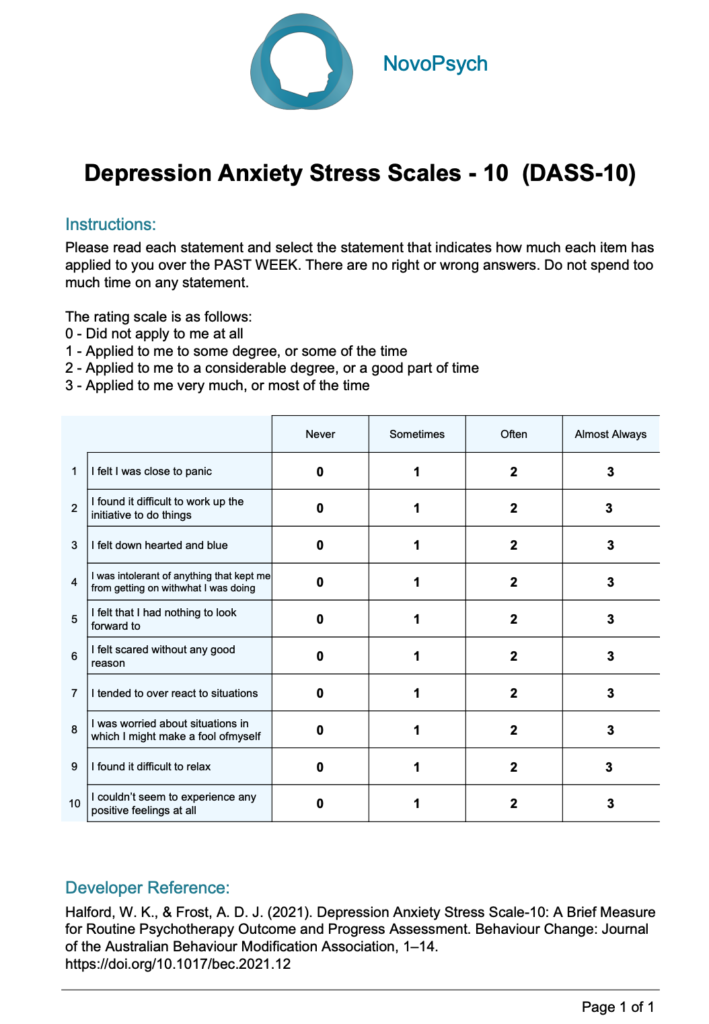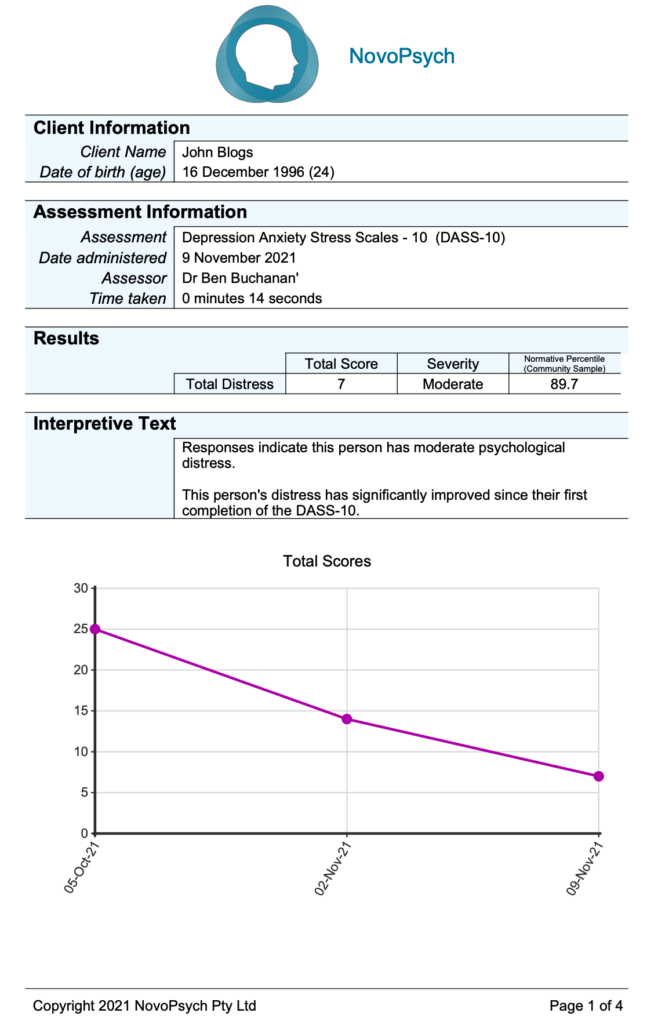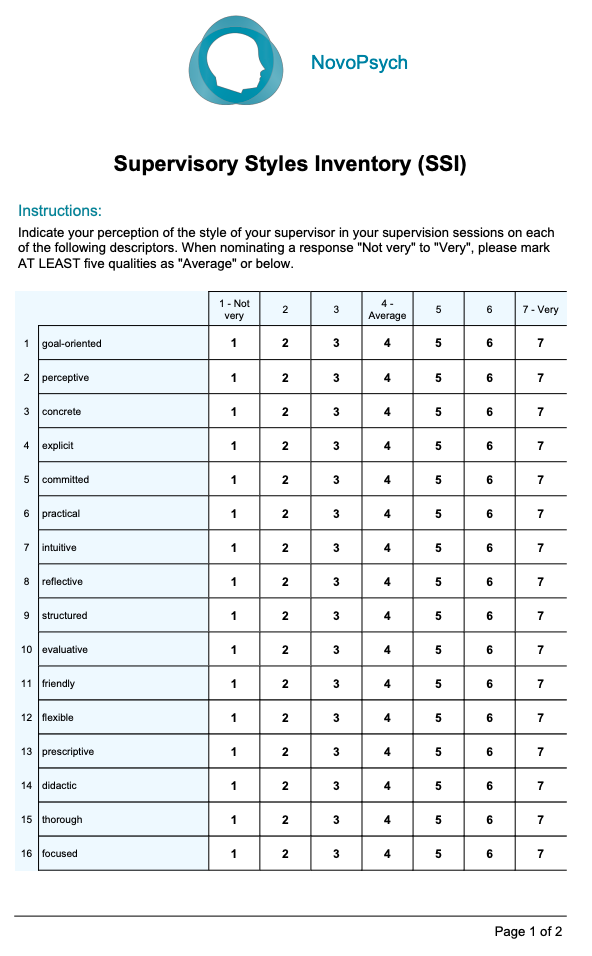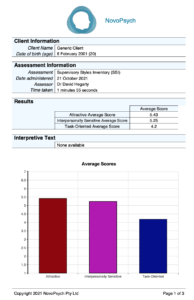Dr David Hegarty
The World Health Organisation Disability Assessment Schedule (WHODAS 2.0) is a practical, generic assessment instrument that can measure health and disability at population level or in clinical practice (World Health Organisation (WHO), 2010).
- 7 minutes
- Ages 18+
- Disability, Formulation, Health
This is the interview version of the WHODAS 2.0, which can be completed by a clinician for interviewing individuals 18 years of age and over. There is also a proxy version, which can be completed by a relative, carer, or friend, or a self-report version.
WHODAS 2.0 captures the level of functioning in six domains of life:
- Cognition – understanding and communicating
- Mobility – moving and getting around
- Self-care – attending to one’s hygiene, dressing, eating and staying alone
- Getting along – interacting with other people
- Life activities – domestic responsibilities, leisure, work and school
- Participation – joining in community activities, participating in society.
WHODAS 2.0 provides a common metric of the impact of any health condition in terms of functioning. Being a generic measure, the instrument does not target a specific disease – it can thus be used to compare disability due to different diseases. WHODAS 2.0 also makes it possible to design and monitor the impact of health and health-related interventions. The instrument has proven useful for assessing health and disability levels in the general population and in specific groups (e.g. people with a range of different mental and physical conditions). Furthermore, WHODAS 2.0 makes it easier to design health and health related interventions, and to monitor their impact.
Disability is a major health issue. When global assessments are made for burden of disease, more than half of the burden of premature mortality is due to overall disability. People generally seek health services because a disease makes it difficult for them to do what they used to do beforehand (i.e. because they are disabled) rather than because they have a disease. Health-care providers consider a case to be clinically significant when it limits a person’s daily activities, and they use disability information as the basis of their evaluation and planning.
There are three scoring methods used for the WHODAS 2.0:
- Simple score
- Complex score (and its percentile)
- Average score (and its descriptor)
In simple scoring, the scores assigned to each of the items (1-36) are simply added up without recoding or collapsing of response categories; thus, there is no weighting of individual items. Simple scoring of WHODAS is specific to the sample at hand and should not be assumed to be comparable across populations. The simple sum of the scores of the items across all domains constitutes a statistic that is sufficient to describe the degree of functional limitations. The domain scores provide more detailed information than the summary score and may be useful for comparing individuals or groups against one another or against population standards, and across time (e.g. before and after interventions or other comparisons).
The more complex method of scoring is called “item-response-theory” (IRT) based scoring; it takes into account multiple levels of difficulty for each WHODAS 2.0 item (1-36). This type of scoring for WHODAS 2.0 allows for more fine-grained analyses that make use of the full information of the response categories for comparative analysis across populations or subpopulations. It takes the coding for each item response as “none”, “mild”, “moderate”, “severe” and “extreme” separately, and then summarises the score by differentially weighting the items and the levels of severity. Converting the summary score into a metric ranging from 0 to 100 (where 0 = no disability; 100 = full disability). A percentile is provided that allows for a comparison to a large sample (n = 1,431) from a wide variety of populations (general population, populations with physical problems, populations with mental or emotional problems, populations with alcohol and drug use problems) from over 21 countries (WHO, 2010). A percentile of 50 indicates that an individual is experiencing an average level of disability when compared to other members of the sample.
The average scores are comparable to the WHODAS 5-point scale, which allows the clinician to think of the individual’s disability in terms of none (0-0.49), mild (0.5-1.49), moderate (1.5-2.49), severe (2.5-3.49), or extreme (3.5-4). The average domain and general disability scores were found to be reliable, easy to use, and clinically useful to the clinicians in the DSM-5 Field Trials (APA, 2021). The average domain score is calculated by dividing the raw domain score by the number of items in the domain (e.g., if all the items within the “understanding and communicating” domain are rated as being moderate then the average domain score would be 18/6 = 3, indicating moderate disability). The average general disability score is calculated by dividing the raw overall score by number of items in the measure (i.e., 36). Average scores should be emphasised when the client misses optional items as its scoring caters for these missing items, whereas the complex scoring method does not.
The three scoring methods are used for each of the 6 domains:
- Cognition – Assesses communication and thinking activities; specific areas assessed include concentrating, remembering, problem solving, learning and communicating.
- Mobility – Assesses activities such as standing, moving around inside the home, getting out of the home and walking a long distance.
- Self-care – Assesses hygiene, dressing, eating and staying alone.
- Getting along – Assesses interactions with other people and difficulties that might be encountered with this life domain due to a health condition; in this context, “other people” includes those known intimately or well (e.g. spouse or partner, family members or close friends) and those not known well (e.g. strangers).
- Life activities – Assesses difficulty with day-to-day activities (i.e. those that people do on most days, including those associated with domestic responsibilities, leisure, work and school).
- Participation – Assesses social dimensions, such as community activities; barriers and hindrances in the world around the respondent; and problems with other issues, such as maintaining personal dignity.
WHODAS 2.0 has excellent psychometric properties. Test–retest studies of the 36-item scale in countries across the world found it to be highly reliable, with an intra-class coefficient of 0.69–0.89 at item level; 0.93– 0.96 at domain level; and 0.98 at overall level. Cronbach’s alpha levels were generally very high (0.94 – 0.96 for domains and 0.98 for total score; WHO, 2010).
All items were selected on the basis of item-response theory and the instrument as a whole showed a robust factor structure that remained constant across cultures and different types of patient populations. Confirmatory factor analysis showed a rigorous association between the factor structure of the items and the domains, and between the domains and a general disability factor. These results support the unidimensionality of domains.The validation studies also showed that WHODAS 2.0 compared well with other measures of disability or health status, and with clinician and proxy ratings.
The WHODAS 2.0 shows sensitivity to change in people who have certain health conditions (e.g. cataract, hip or knee problems, depression, schizophrenia or alcohol problems), as it can pick up improvements in functioning following treatment.
Assess your patients with the World Health Organisation Disability Assessment Schedule
2.0 – Interview using a NovoPsych account
- For Psychologists & Mental Health Clinicians
- Send Assessments to Patient’s Phone
- Receive Comprehensive Reports
- Access Over 100 Validated Assessments
- Instant Psychometric Scoring
- Track Symptoms
- Inform Treatment
Developer
Ustun, T.B, Kostanjsek, N., Chatterji, S., Rehm, J (Ed.). (2010). Measuring health and disability : manual for WHO Disability Assessment Schedule (WHODAS 2.0). World Health Organization. https://www.who.int/publications/i/item/measuring-health-and-disability-manual-for-who-disability-assessment-schedule-(-whodas-2.0)
References
American Psychiatric Association. Online Assessment Measures. (n.d.). Retrieved November 6, 2021, from https://www.psychiatry.org/File%20Library/Psychiatrists/Practice/DSM/APA_DSM5_WHODAS-2-Self-Administered.pdf



